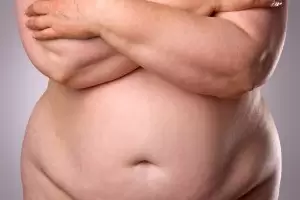Panniculectomy Surgery
-
Content written by Karen Vieira, PhD, MSM | Reviewed by EnhanceMyself Medical Team | Last updated 6/17/2023
- Overview
Overview
What is a panniculectomy?
A panniculectomy is a surgical procedure designed to remove excess skin and fat from the lower abdomen, specifically the pannus or panniculus—a large overhanging apron of skin and tissue. It is commonly performed on individuals who have experienced significant weight loss, often as a result of bariatric surgery or natural means.
Cost of panniculectomy
The cost of panniculectomy surgery ranges from $8,500 to $10,000. There are several factors that can influence the overall cost, such as:
- Surgeon’s Fee: The experience and reputation of your surgeon can make a difference. Highly skilled plastic surgeons often charge a premium for their services.
- Anesthesia: The type of anesthesia used, duration of your procedure, and qualifications of the anesthesiologist can have an impact.
- Surgical Facility: These fees cover the usage of the operating room and other associated services.
- Location Matters: The cost of living and the average pricing for medical services in a particular area can affect the cost of your procedure. In general, urban areas tend to have higher fees.
- Extent of Procedure: The amount of excess skin and tissue that needs to be removed can impact the time required and overall pricing.
- Pre & Postoperative Care: This includes consultations, medical tests, surgical garments, medications, and follow-up appointments.
- Additional Procedures: Your cost will be higher if you’re considering other procedures along with your panniculectomy, such as liposuction, arm lift or thighplasty.
- Insurance: In certain cases, surgery may be deemed medically necessary due to issues such as chronic rashes, infections, or difficulty with mobility. For these instances, insurance may cover a portion of the procedure, but coverage can vary and specific criteria must be met to qualify.
To get an accurate quote, meet with a board-certified plastic surgeon to determine the specific cost based on your individual circumstances.
Are you a candidate?

Is panniculectomy surgery right for you?
If you are looking to remove the excess skin and fat hanging below your abdomen, a panniculectomy may be right for you. While the removal of this excess skin does flatten the abdomen, note that a panniculectomy does not tighten the muscle wall like an abdominoplasty (“tummy tuck”) does.
An ideal candidate for a panniculectomy should:
- Maintain stable weight for at least 6 months after weight loss surgery
- Have good dietary habits
- Maintain a relatively active lifestyle
- Be a non-smoker
- Not have cardiac disease, lung disease or diabetes
- Have a body mass index of less than 40
- Have tried other treatments such as topical antifungals, corticosteroids and antibiotics but none of these treatments have worked
What to expect before surgery
Prior to surgery, your doctor will go over your medical history and examine your abdomen to determine your eligibility for this surgery. Your doctor will ask you about previous surgeries and prescriptions you are taking.
Some medications, such as aspirin, oral contraceptives and herbal supplements may affect the healing process and you may be advised to stop taking them before the procedure.
Procedure overview
The following provides a general overview of how a panniculectomy is typically performed according to the ASPS website:
- Anesthesia: General anesthesia to used to ensure you remain comfortable and pain-free during the entire procedure.
- Incision: After the anesthesia has taken effect and you completely unconscious, your plastic surgeon will make an incision across the lower abdomen, which typically extends from hip to hip. The exact length and shape of the incision may vary depending on the amount of excess tissue.
- Tissue Removal: Then your surgeon will separate the excess skin and fat from the underlying tissues. The panniculus is surgical removed, and liposuction may be used to remove additional fat deposits.
- Muscular Repair (If Needed): In some cases, your surgeon may repair the underlying abdominal muscles. This is typically done for individuals who have experienced muscle separation (diastasis recti) as a result of weight fluctuations or pregnancy. The muscles are tightened and sutured together to create a firmer abdominal shape.
- Closure: Next, your surgeon will close the incisions. Deep sutures are used to provide strength to the incision site, and superficial sutures or skin adhesives are used to close the skin. The goal is to create minimal tension on the incision and ensure a clean and well-approximated closure.
- After Surgery: After surgery, you will be taken to a recovery area where your surgery will provide you with detailed recovery instructions. You will likely wear compression garments to reduce swelling and support the healing process.
Recovery time
The recovery time after a panniculectomy can vary depending on several factors, including the extent of the procedure, individual healing capabilities, and overall health. Generally, the recovery period for a panniculectomy is several weeks to a few months.
When will you see results?
It may take a few weeks or months to start seeing results due to swelling that occurs after the surgery. This is normal. As a matter of fact, it can take up to 2 years to fully see the results of the surgery. Most patients are happy with the outcome of the procedure.
How long will your results last?
You can expect that the final results from the panniculectomy will be maintained long-term if you continue to lead a healthy lifestyle with good diet and exercise.
Tummy tuck vs. panniculectomy
A panniculectomy is often considered to be a medically necessary procedure because the pannus interferes with mobility and can cause infections and discomfort.
An abdominoplasty, or “tummy tuck,” also removes excess skin and fat but additionally focuses on tightening the muscle wall to achieve increased muscle tone and a slender body.
For this reason, sometimes people choose to do both of these procedures. However, because an abdominoplasty focuses on appearance and is not medically necessary, it is considered a cosmetic treatment and tends not to be covered by insurance.
Here is a quick summary of some advantages and disadvantages of both procedures:
Panniculectomy
| Advantages | Disadvantages |
| Improves quality of life by resolving discomfort from excess skin and fat. | Often leaves hip-to-hip scar across lower mid-section. |
| Likely covered by insurance if medically necessary. | Will not tighten the abdominal muscles. |
Abdominoplasty (Tummy Tuck)
| Advantages | Disadvantages |
| Aesthetically trims and tightens the abdominal muscles for a firmer and smoother abdomen. | Procedure leaves permanent, yet well-hidden scar. |
| Removes or improves stretch marks, C-section, hysterectomy scars and lower back pain. | Likely is not covered by insurance. |
EnhanceMyself.com relies on sources such as professional medical organizations, government agencies, academic institutions, and peer-reviewed scientific journals to write it’s articles. Learn more about how we ensure our content is accurate, in-depth, and unbiased by reading our editorial guidelines.
*Medical Disclaimer: This website does not provide medical advice. Read more.

